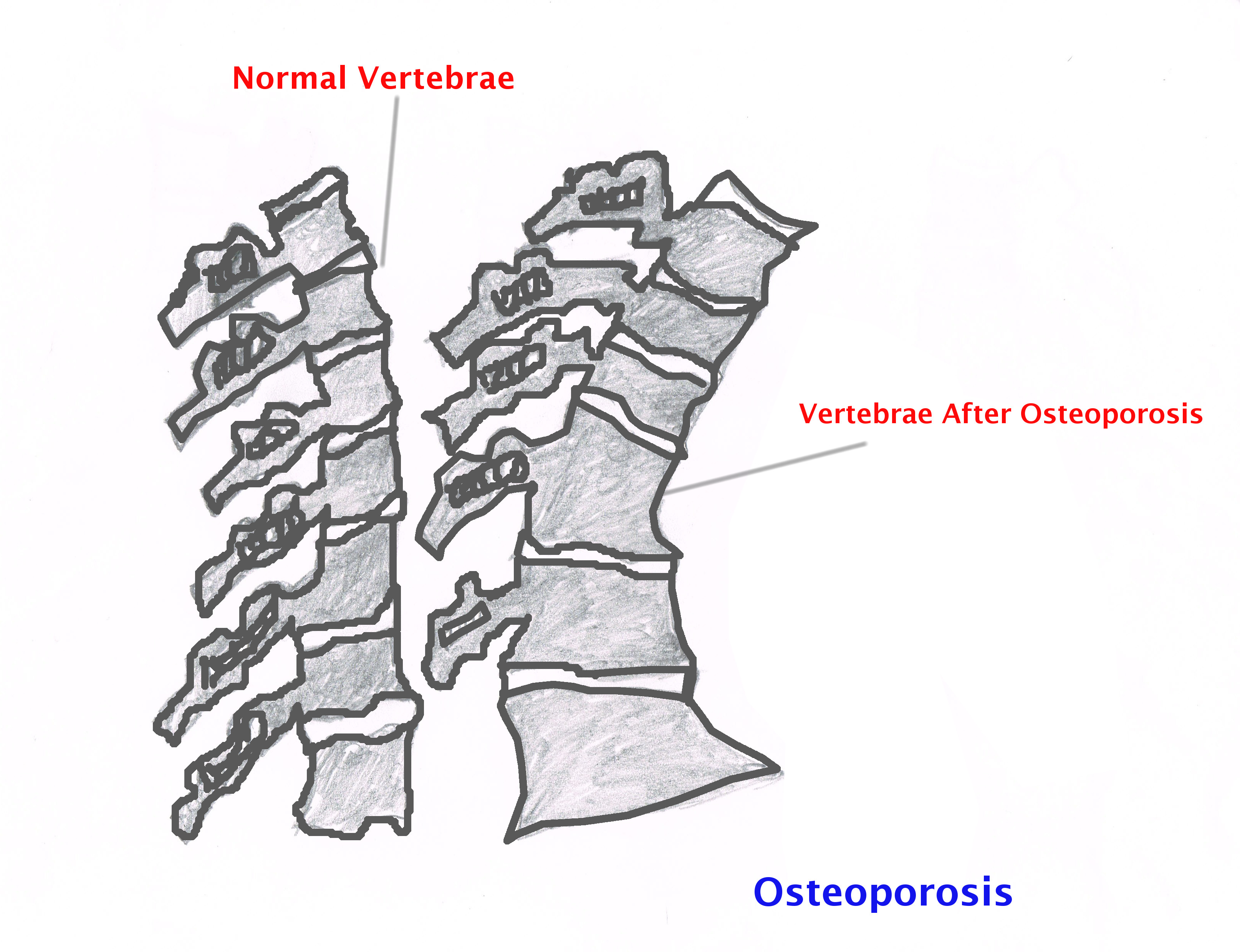Osteoporosis is a common problem. This condition is basically a softening of the bones, and, if left untreated, can be a risk factor for other, more serious problems. Risk factors for osteoporosis include the following:
- Female gender is more at risk than male gender
- Risk increases with age
- Those of Caucasian or Asian races have higher risk
- Family history positive for osteoporosis, especially parent or siblings
- Those who have smaller body frames have increased risk
- Low levels of sex hormones (low testosterone or post menopause) have elevated risk
- History of hyperthyroidism increases risk of osteoporosis
- Overactive adrenal and/or parathyroid glands have been associated with osteoporosis
While having osteoporosis is not a painful condition in and of itself, it can to the risk of fractures which can be debilitating. The most debilitating of these is hip fracture, which is beyond the scope of this discussion. Another issue is spinal compression fractures, which are small fractures that can occur in the spinal column due to osteoporosis. These are usually repaired surgically, but as you might guess can be quite painful when they occur.
The best way to prevent these debilitating issues are to be proactive in keeping the bones healthy. Adequate vitamin D and calcium intake...which can be achieved by a healthy diet and/or supplements is a good place to start. Weight bearing exercise can add much to this regimen. Weight bearing exercise is any exercise that forces a body to work against gravity, including weight training, hiking, running, yoga, and other activities.
Sources: Mayo Clinic; Google.com; Wikimedia

Comments
Post a Comment